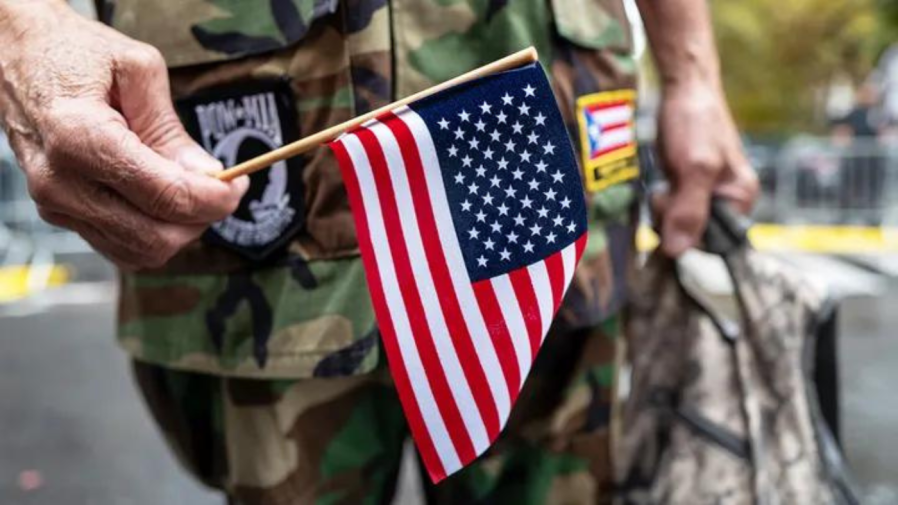
Veterans and military families will play a pivotal role in the upcoming 2024 election, and it’s up to Democrats not to squander their opportunity.
The race is shaping up, once again, to be the most consequential election in our lifetime. With a large number of veteran and military family voters in key states and districts, this demographic group could play a decisive role in the outcome.
There are a number of reasons why veterans and military families are likely to play a significant role in 2024. Veterans and military families have a unique set of concerns and priorities. They are often concerned about “kitchen table” issues such as healthcare, education and the economy, but they are also concerned with, and directly affected by, national security and foreign policy matters. These concerns are likely to be reflected in their voting decisions.
Veterans and military families are a large and diverse demographic. According to the U.S. Census Bureau, there are more than 16 million veterans in the United States, and approximately 1.4 million active-duty military personnel. This group is expected to decline in the coming years, as the smaller military engaged in fewer conflicts does not churn out the same number of veterans as it once did during the height of the Iraq surge or the Vietnam War draft. In 1980, approximately 18 percent of Americans had some military service, down to only about 6 percent in 2022, according to Pew.
The lack of military connection among Americans has created a real divide between the military and civilian populations. Increasingly, Americans’ only touchpoint with the military is during sporting events or on TV.
Veterans and military families are politically active and civically engaged as well. They are more likely to follow the news carefully and be involved in their communities, according to a 2021 Military Times survey. As more women and minorities join the military, demographics among the veteran community are expected to change accordingly.
Crucially, the misconception about veterans as a reliable conservative voting bloc is shifting. According to a 2009 report by Gallup, veterans were more likely to be Republican than non-veterans; however, in recent years, there has been a stark shift to the left among military affiliated voters.
In 2016 exit polls by the New York Times, veterans voted for Donald Trump by a margin of 61 percent to 34 percent. However, after nearly four years of Trump in office, many of those voters changed their allegiance.
Leading up to the 2020 election, a Military Times and Syracuse University survey of active-duty troops indicated Democratic contender Joe Biden had a slight edge on President Trump among the military community: 41 percent for Biden to 37 percent for Trump, and 13 percent for a third-party candidate. A solid 50 percent of active-duty troops had an unfavorable or very unfavorable view of the commander in chief in the same 2020 Military Times survey. A later survey in October indicated Trump had a wide lead of 59 percent among veterans aged 55 or older, but not the younger groups. By Election Day 2020, the vote share among veteran voters had fallen to 54 percent for Trump and increased to 44 percent for Biden — a 10-point swing from four years prior, according to the New York Times’ exit polls.
In addition to the overall changes in voting patterns, veterans and military families could be a pivotal demographic to appeal to due to their geographic diffusion. In Pennsylvania, where Biden won by only 1.2 percent, its nearly 7 percent veteran density could swing the vote, especially in key districts like Rep. Susan Wild’s 7th, where Trump is holding a rally this weekend. Similarly, Georgia, which Biden won by only 0.3 percent, has 9 percent veteran density and several important military installations. Out west, Biden’s 0.4 percent win margin in Arizona could be propped up by military affiliated voters, since a solid 10 percent of the state are veterans. While Biden won more than 81 million votes across the country, the real margin came down to tenths of a percent in a few key swing states thanks to veterans and military families, including overseas voters.
Democrats have a number of opportunities to appeal to veterans and military families this year. We need to focus on issues that are important to our constituents, such as access to affordable healthcare, attainable higher education, and employment opportunities in the 21st century economy, especially for military spouses. We must also demonstrate that we’re listening to them when it comes to the urgent issues of our time, considering how military families will be deeply affected by national security and foreign policy decisions. Repeating the mistakes of the post-9/11 war on terrorism, for example, will be looked upon unfavorably by those who are still dealing with the aftereffects of 20 years of deployments to Iraq, Afghanistan and nearly 40 other countries around the world.
Most importantly, veterans and military families are looking for a commander in chief who has a steady hand at the helm, and who is guided by humanitarian values. After two decades of war, veterans want to ensure our Afghan allies are provided for, to support Ukraine in its defense against Putin’s aggression, and to see peace in Israel and Palestine. It’s up to our president to deliver those results or present a plan for how to get there when he asks for our vote.
Naveed Shah is a U.S. Army veteran who served in Iraq and currently works for the progressive veterans organization Common Defense.

